Garden blackberries: pruning and preparation for winter
Blackberry, which is also called kumanika, and in the south - ozhina (azhina), is tasty and healthy. And she looks beautiful if she is properly cared for in the garden. One of the main points is to prune blackberries at least twice a year, in autumn and spring. Without this, there will be no good harvest.
Why cropping?
Garden blackberry is a biennial plant. The shoots of the first year do not bear fruit, they only grow - they store up strength, lay fruit buds. In the second year, they are covered with delicate flowers, from which berries are subsequently formed. After the harvest, which is usually abundant, the shoots grow old rapidly, nevertheless spending energy and nutrition, depriving young branches. Correct pruning of the "oldies" that have spent their time is a guarantee of an excellent future harvest.
It is also necessary to cut out the root shoots in a timely manner, which the blackberry gives with enviable constancy. The offspring quickly thicken the bush, depriving it of a sufficient amount of light and air, which leads to the development of numerous diseases.
Suitable dates for pruning blackberries are spring and autumn. Each trim has its own characteristics and goals. In addition, gardeners often prune shrubs in the summer.
Trimming is performed with a sharpened sterile instrument. All sections are immediately closed with garden pitch.
It is quite difficult to handle thorny bushes, because of the all-pervading thorns, blackberries were not especially often grown in gardens. A breakthrough can be considered the emergence of the first thornless variety - the Thornfrey blackberry (translated from English - "thornless") in the 60s of the last century. The emergence of new varieties and hybrids devoid of thorns significantly contributed to the popularity of the berry.
Spring pruning
The main purpose of spring pruning of blackberries, thorny and thornless varieties, is to free the bush from branches that have suffered during the winter (broken by the wind, frozen, with signs of disease) and the formation of a fruiting plant.
Pruning is carried out when the snow has just melted, the average daily air temperature is about 5-7 ° C, at night above zero, the buds have not yet begun to swell. Specific dates are determined by the climatic and meteorological conditions of the area. You can focus on general instructions:
- in the south, pruning is carried out from early March to mid-April;
- in the central regions and the middle lane - from the second half of April;
- in the Urals and Siberia - from the second half of May.
Spring pruning has its own characteristics for bushes of different ages. The usual variety is dealt with or thornless, also does not matter. An obligatory element of the program is the sanitary component: the removal of frostbite and broken branches.
Frozen branches are easy to distinguish: they turn black, become brittle. Successfully overwintered shoots retain their elasticity, they are brown in color, with a slight sheen.
The first processing is carried out immediately after landingby pruning the shoots of seedlings to a height of 20-25 cm in order to stimulate the development and strengthening of the roots. A rooted bush will give numerous green shoots, which will have to be controlled in the summer, since the length of the branches can reach 2-3 m.
The second year is remarkable for the anticipation of the harvest. To push the blackberries to flowering profusely and setting a large number of fruits, the tops are cut off. The remaining buds will throw out young, strong shoots that will bring a good harvest.
At the same time, root suckers are shortened so that a large number of young shoots are formed on them.
In the third year, the shoots that bore fruit last year are cut out.Then the strongest shoots of last year's growth are selected, fixed on trellises and thinning of the bush is carried out. Selected shoots should show no signs of pests or diseases.
From the fourth year, pruning in the spring is carried out according to the above scheme of replacing fertile branches with young shoots.
Old shoots are removed strictly at the root, so as not to provoke the development of putrefactive diseases. Diseases can completely destroy a healthy bush in a short time.
They behave somewhat differently with remontant blackberry varieties, among which there are many varieties without thorns. Since all branches are cut out in the fall, with the onset of warmth, the bush releases many young shoots, ready for fruiting. They are thinned out, leaving from 5 to 20 pieces, depending on the age of the bush. The selection principle is strong healthy shoots. Thin, small, weak remove.
Caring for blackberries after spring pruning
After pruning, blackberries need extra careful care in three stages.
- Garter on trellises according to one of the three schemes adopted for blackberries - fan, undulating or rope. The second and third are recommended for creeping varieties, otherwise called dewdrop. Shoots are tied up, dividing them by age, directing the fruiting branches in one direction, replacing them in the other. Separation later will make it easier to pick the berries and prune the bush in the fall.
- Loosening the soil to a depth of 10-15 cm to ensure aeration of the roots, facilitate the access of moisture and nutrients.
- Watering is carried out daily, but its necessity is necessarily controlled: if the soil is still wet, the procedure is postponed. It is optimal to water the bushes in the early morning or before sunset.
Common mistakes during spring pruning
Often, gardeners, especially beginners, make annoying mistakes in pruning garden blackberries, leading to a decrease in yield.
- Violation of terms - sometimes the shrub is cut off without waiting for positive night temperatures. Haste leads to freezing of fruit buds, reducing the chances of a good harvest.
- Incorrect pruning, when young shoots are cut out and a crown is formed from fertile branches.
- Irregular pruning, when the event turns from annual to "cut someday". The bushes run wild, the size of the berries decreases, their taste deteriorates.
- Too many shoots are left on the bush. They will experience a lack of nutrition, which will not only affect yields, but also cause harm - weakening of the plant, disease, death.
- Leave weak and diseased shoots, taking away the lion's share of the nutrients received by the blackberry.
The optimal number of shoots intended for fruiting is 4-5 for upright varieties, 7-10 for creeping varieties.
Autumn pruning
The procedure is mandatory, as it is an essential part of preparing garden blackberry plantings for winter. The process of covering thorny shoots is quite laborious, and if you leave the bush without pruning, it will be very difficult to cope with its insulation - the length of the lashes and their large number complicate the work.
All varieties are subject to autumn pruning - prickly and without thorns.
The timing of autumn pruning is determined by the duration of the growing season of the variety; pruning begins in mid-September.
- The first step is to remove all old branches so that the nutrients necessary for a safe wintering are distributed among the young shoots. At the same time, unpromising shoots are cut out: weak, overly elongated thin, damaged by pest attacks.
- The next step is to determine the load on the bush. To the optimal number of shoots for a given variety (species) add two or three "safety" - in case of freezing. The rest are cut out mercilessly.
- The remaining shoots are shortened by a quarter, making a cut 1 cm higher than the bud facing outward.
- Finish off autumn pruning with harvesting.All trimmings and dry leaves are scooped off the bushes and burned. This is done not so much for an aesthetic purpose as to prevent the reproduction of pests that winter in the garbage, and to prevent the development of diseases. The soil next to the blackberry is generously mulched with peat or sawdust.
Gaining popularity remontant blackberry varieties (fruiting on the shoots of the first year) are cut at the very root in the fall.
In the south, where the bushes hibernate without shelter, the shoots are cut to the same length - about 1.5-1.8 m.
Autumn pruning is combined with harvesting cuttings for further propagation of berry bushes.
Typical mistakes during autumn pruning:
- transferring pruning to spring - this weakens the shrub, the shoots do not have time to fully ripen by winter, which is why wintering often ends with diseases and plant death;
- leave too many shoots, which also makes it difficult to prepare for winter.
It is better to leave a few undoubtedly healthy shoots than to overload the bush with weakened growth, which is unlikely to overwinter.
Do you need summer blackberry pruning?
Erect blackberry varieties are leaders in the formation of root growth. Scourges growing from adventitious root buds grow up to 3 m long in a season, thickening the mother bush, making it opaque.
Creeping varieties do not indulge in root suckers, but replacement shoots growing from the root reach a length of about 10 m, cluttering the site, often squeeze through the fence to the neighbors.
Roots can be used to propagate your favorite blackberry variety. The offspring is dug up, separated from the main rhizome with a piece of root and planted. The procedure can be carried out throughout the entire growing season, but spring seedlings root much better. Unfortunately, the method is not suitable for large-fruited and hybrid varieties.
To get a good harvest of berries, summer shoots are either cut out at the root or significantly shortened so that they do not interfere with the setting and maturation of a full-fledged crop. An option is possible when they are limited to pinching the apical kidney.
First-year bushes are cut in summer. They are shortened by 10-15 cm. In erect species, this stimulates the formation of lateral shoots. Creeping blackberries drive out new fruit branches. At the same time, the buds that appear are cut off, since in the first year only one thing is required from the blackberries - a strong healthy root system.
Experts recommend cutting off the fruit-bearing branches, even the shortest lateral ones, as the ripe berries are harvested, it doesn't matter if it's July or August. There is no more sense from them, they will only consume useful substances.
Gardeners often use summer (before flowering) pruning of fruiting branches, which not only stimulates the growth of lateral shoots, but also moves the bulk of ripening berries to the middle of the branches. This does not affect the yield, but the size and taste of the berries become more attractive.
It is advisable in the summer to track and remove in time shoots on which signs of disease, pest nests, are simply weak and unpromising. The sooner the bush is rid of this ballast, the better it will feel. It is also worth regularly cutting out young growth that thickens the bush.
When examining blackberry bushes in spring, their viability is assessed by counting the number of successfully overwintered branches. If out of 8-10 shoots left for the winter, 6 or more have not suffered or received minor damage, then the bush is strong and will give a good harvest. There are 4-5 healthy branches left - an average. If 2-3 shoots have emerged intact from wintering, it is better to dig such a bush, since there is nothing to expect from it.
Pruning blackberries is an important part of plant care. From a habit, the process may seem difficult, but you cannot do without it.Correct and timely pruning of the shrub gives a brilliant result - a good harvest of berries with a pleasant taste and healing properties.
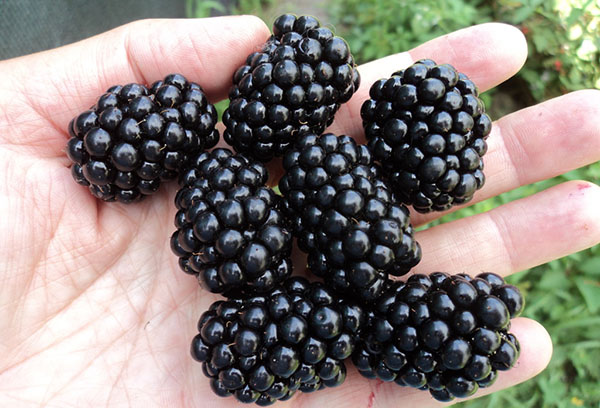

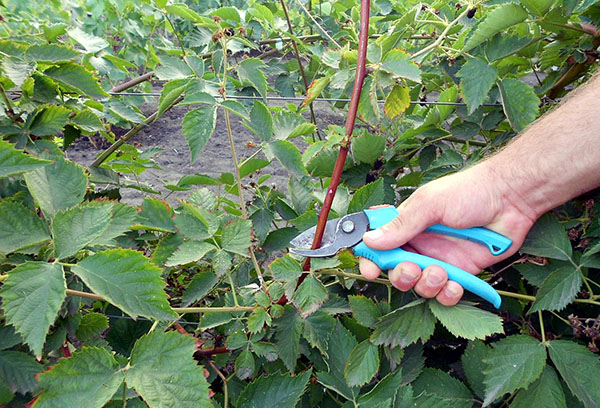
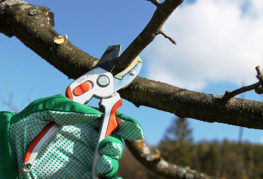
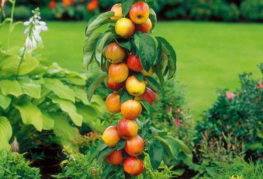
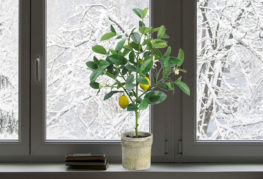
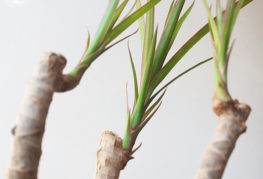
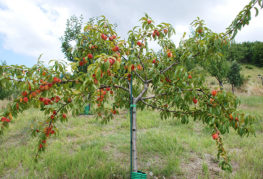
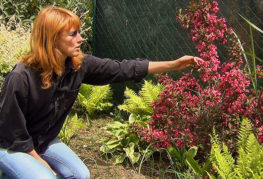
and will be published shortly.